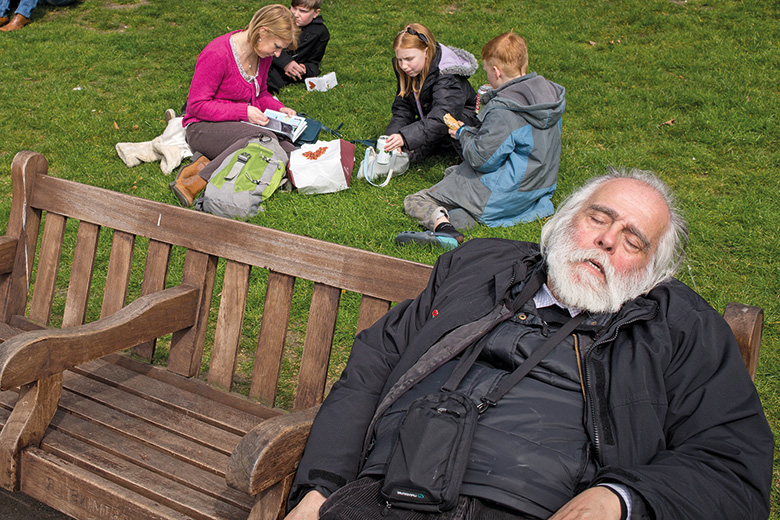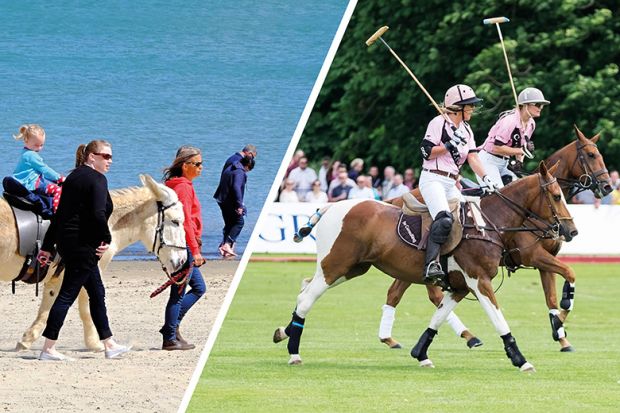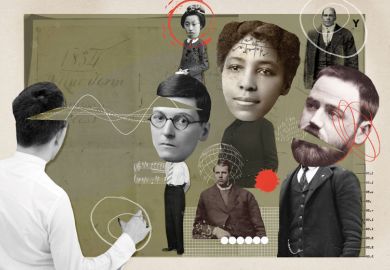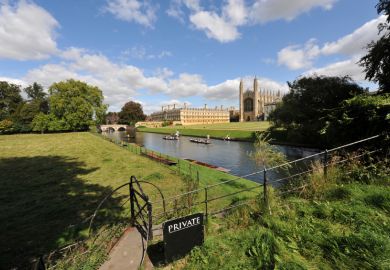The great novel about universities and social hierarchy is Thomas Hardy’s Jude the Obscure, as plenty of education researchers have realised. Poor stonemason Jude tries to teach himself Greek and Latin so as to gain admission to Christminster, a fictionalised version of the University of Oxford, but finds the university’s doors closed to him. “Those buildings and their associations and privileges were not for him,” Jude eventually realises. Looking on the spires and quadrangles of Christminster “he saw that his destiny lay not with these, but among the manual toilers”.
What Hardy expressed so well – drawing on his own lifelong bitterness about never going to university – was an individual’s anguish at losing control over their own life and prospects. In the 19th century as now, access to this highly exclusive institution shaped destiny.
These days, any number of English universities would be competing to recruit Jude, and to pocket the £9,000 a year in fees that he would be able to borrow from the government. But the present English system, in common with that of the US, is an illustration of the fact that widening access to higher education per se does not necessarily do much to widen opportunity. Hierarchies of prestige between different universities have accentuated with the advent of mass higher education, and those well-resourced, hyper-selective institutions at the top of the pecking order admit richer students at far higher rates than their poorer counterparts, conferring on them further remarkable advantages in job markets. The UK and US, which have sharply hierarchical higher education systems, both have high levels of income inequality relative to most developed nations, as measured by United Nations human development reports.
Inequality is high on the political agenda after the financial crisis, sometimes in surprising quarters. A 2015 report by the Organisation for Economic Cooperation and Development, In it Together: Why Less Inequality Benefits All, said that inequality was at record levels in many developed nations in the wake of the crisis, bringing not just social and political consequences, but economic consequences too given that “rising inequality tends to drag down GDP growth”.
The UK’s Brexit vote and the election of Donald Trump as US president have prompted largely nebulous discussion about the gulf between “elites” and the rest of society – without examination of the key role that education plays in the construction of supposed elites.
While access for poorer students to higher education generally, and to elite institutions specifically, is a major policy issue across many developed nations, important questions about whether hierarchies of prestige between universities are reproducing social inequality, or even making it worse, are remarkable by their absence. And while systems of funding and tuition fees are, of course, crucial to these social questions, imagining alternatives to hyper-selectivity as the pinnacle of global higher education could set in motion a fundamental rethink of how universities promote fairness for individuals and society, and of how universities relate to their regions and cities.

The advent of big data research on how graduates’ earnings vary with their social backgrounds and the universities they attend is shedding important new light on the question of exactly who gets access to high earnings in unequal societies.
In the US, university researchers working on behalf of The Equality of Opportunity Project – which aims to use big data to improve “upward mobility” – looked at the earnings and parental backgrounds of 30 million graduates who studied between 1999 and 2013, linking tax records to college attendance records. In their January 2017 paper, “Mobility report cards: the role of colleges in intergenerational mobility” , the researchers looked at the social backgrounds of students at a group of 12 elite US institutions – the Ivy League plus Duke University, the University of Chicago, the Massachusetts Institute of Technology and Stanford University.
“There are only about 4 per cent of students at these elite institutions that come from families in the bottom 20 per cent of the family income distribution – that’s families that earn less than about $25,000 (£19,432) a year on average over five years,” says John Friedman, assistant professor of economics at Brown University and one of the paper’s authors.
Another startlingly specific finding in the paper was that “children whose parents are in the top 1 per cent of the income distribution are 77 times more likely to attend an Ivy League college than those whose parents are in the bottom income quintile”. The New York Times began its coverage of the findings with: “Students at elite colleges are even wealthier than experts realised”.
Interestingly, the researchers found that the small numbers of poorer students at elite schools achieved similar earnings outcomes to their richer peers. It is not possible to tell from the research whether these students entered with lower test scores, but at least some of them may have. This suggests that universities “may be able to expand the pool of poor students in their student body without having to admit students that are going to have a ton of trouble [with the academic standards of the course] in the long run”, says Friedman.
Meanwhile, researchers from institutions including the Institute for Fiscal Studies and Harvard University have also taken a big data approach to studying graduate earnings in England. They used anonymised tax data and student loans records for 260,000 students 10 years after graduation to try to answer a fundamental question: to what extent are graduates’ earnings driven by their prior attainment and the background of their parents, as opposed to which university they studied at and the course they took.
In contrast to the US study, they concluded that “students from richer families earn more than students from less rich families, even if they attend the same university and take the same subject”, says Anna Vignoles, professor of education at the University of Cambridge and one of the authors of the study. This could be down to the fact that wealthier students can rely on greater support from parents for unpaid internships or master’s study, or to the fact that “non-cognitive skills developed in private schools”, such as confidence, “come into their own post-graduation”, Vignoles suggests.
But “there remain differences in earnings across institutions even after allowing for student background and subject”, says Vignoles. For men, the difference between a top and bottom decile institution in terms of Ucas entry points is about £10,000 a year. One explanation, she says, could be that “students at some institutions learn more”. Another is that “the reputation of the university may encourage elite employers to hire their graduates” and, as a consequence, such students get better first job opportunities. A third reason could be that “some institutions provide more assistance for students to transition into the labour market”.
Looking at the question of institution choice, the research, published in a 2016 IFS working paper, “How English domiciled graduate earnings vary with gender, institution attended, subject and socio-economic background”, reveals that “at the 90th percentile, differences really do appear, suggesting that, at the top end of the earnings distribution, institution choice matters more”.
Separate research co-authored by Vignoles looked at university access for disadvantaged children across England, Canada, the US and Australia. It found that even taking into account the range of school achievement scores up to age 18, “young people from affluent backgrounds remain twice as likely to enter a ‘selective’ higher education institution as their less fortunate peers (across all four countries)”.
That link between academic selection and social selection is well established. But while disparities of parental income and school education might be at the root of inequality, the hierarchy of universities is, at best, doing nothing to improve the situation.

The attitudes of employers are a key factor propping up the existence of hyperselective universities. “I call them two interlocking systems of inequality – the institutions of higher education and the institutions of employment,” says Lauren Rivera, an assistant professor in the Kellogg School of Management at Northwestern University, who conducted 120 interviews with individuals responsible for making hiring decisions for elite US consulting, law and investment banking firms for her 2015 book Pedigree: How Elite Students Get Elite Jobs.
Rivera, a former management consultant, found a common assumption among her interviewees that “the status of the university you attend is somehow an accurate or acceptable measure of your cognitive abilities”. But “what they don’t realise are all the class and race biases that we see at every single step throughout the college admissions process”, she adds.
These elite firms “literally have lists – that if you went to a certain college, we’ll look at you”, Rivera continues. But some of those lists include only 10 institutions. And “if you didn’t go to one of those schools you need a social connection to get through the gate”, she says.
In the UK, a 2016 report by the Bridge Group – a charity based at King’s College London that promotes equal access to education and employment – analysed the socio-economic backgrounds of candidates applying to the UK Civil Service’s fast stream programme and their rates of success. The report found that “candidates graduating from more selective universities have higher odds of passing each recruitment stage”.
Since 2012, Clifford Chance, one of the UK’s five “magic circle” law firms, has operated a “CV-blind” recruitment process at interview, in which interviewers are not allowed to know which university, or which type of school, candidates attended. Following this, “we absolutely have seen the number of institutions we recruit from increase”, says Laura Yeates, head of graduate talent at Clifford Chance. The firm has also made other changes, such as using contextual data in a similar manner to the way that some universities use it: judging an applicant’s school attainment in terms of the school’s performance relative to others.
Although the change is difficult to attribute to one particular initiative, Clifford Chance now has 41 different universities represented in its graduate intake, a 30 per cent increase since CV-blind interviews were introduced. As the firm needs “a very diverse graduate make-up with a whole set of diverse viewpoints and perspectives, it just adds value to our business: it just makes sense”, Yeates says.
She adds that institutional names are also “not used in any way” to inform the initial filtering of applicants. “Could we go one step further and actually take [university names] off the applications?” she asks. “Probably. Will that happen? Possibly.”

The divide created by the existence of hyper-selective institutions is damaging in educational and social terms, some believe. Danny Dorling, Halford Mackinder professor of geography at Oxford, is one of the UK’s most prominent researchers on social inequality. “If you see grammar schools as a problem, then you can see the kinds of universities we have as a problem,” he says.
Nick Hillman, director of the Higher Education Policy Institute, notes that many people attend a less selective local university while working, or caring for family. But some “don’t understand how the selective nature of the university system works – and it has lifelong consequences”, he adds. “You don’t have to be a radical communist” – and as a former Conservative parliamentary candidate, Hillman is not – “to think a little less inequality would be good. That includes less inequality of opportunity and inequality of outcome.”
Tim Blackman, vice-chancellor of Middlesex University, is another who likens England’s selective universities to selection at school level. He notes the evidence showing that by “creaming off” the wealthiest and higher-achieving students, grammar schools affect neighbouring comprehensives and lower attainment for the bulk of pupils, judged against national averages. “We’ve got a very socially polarised higher education sector that, probably, is depressing the academic attainments of students, on average, right across the sector,” Blackman says.
He argues in favour of comprehensive universities – or, certainly, ones that are much less selective than today’s hyper-selective institutions. This would, Blackman suggests, offer a better quality of education “because we know that mixed-ability education produces better average outcomes”, given evidence at school level. And “we’re going to have better understanding across cultures, across communities, across social-class backgrounds, if people are being educated together”, he adds.
Blackman suggests that catchment areas could be created, with universities “expected to have a certain proportion of their intake that is local”, while access agreements could be taken a step further to set “quotas that are designed to achieve a better mix across all institutions”.
The Equality of Opportunity research on US colleges offered some intriguing findings about how slightly less selective institutions, with more socially mixed intakes, sometimes outperform their ultra-elite counterparts, at least when it comes to value added. The study found that at New York City’s Ivy League Columbia University, 60 per cent of poor students make it into the top 20 per cent of the earnings distribution, while at Stony Brook University – the nearby Long Island branch of the State University of New York that is not even the most prestigious in the state’s public system – 52 per cent manage to do the same.
“I think what’s surprising though is that Columbia does this with about 5 per cent of [its intake from] kids from the bottom 20 per cent of…the earnings distribution while SUNY Stony Brook does it with 16 per cent of [its intake from that group],” says Friedman.
Similar strong records are in evidence at a number of “middle-tier public institutions” in California, Texas and Florida, Friedman adds, calling for more policy focus on these less highly selective institutions. “Those are the colleges that in our data stand out the most as having this potential contribution to mobility [since] they both have a lot of poor kids and produce excellent outcomes,” says Friedman.
Perhaps that chimes with a point made by Blackman: “So much selection in our universities is way over and above what is actually needed to succeed on the courses. Selection is being used as a signifier of status, of how good a university is, when it’s no measure of how good a university is at all because it’s an intake measure, not an outcome measure.”
Other wealthy developed nations with lower levels of income inequality than the US and UK do without hyper-selective universities. Many institutions in Germany, Europe’s richest nation, perform well in university rankings while being less selective than their English counterparts at undergraduate level except on heavily subscribed courses (although Germany’s school system is selective and there is generally a greater degree of selectivity on new master’s courses following the Bologna Process). LMU Munich, with 50,000 students, is joint 30th in the THE World University Rankings 2016-17, for instance.
In the Netherlands, completion of the post-high school diploma earns the right to enrol at university. For courses where demand exceeds the number of places, a degree of selection is used to determine admission – known as the Numerus Fixus system. But these courses are in the minority.
According to the VSNU, the association of Dutch universities, 20.5 per cent of first-year bachelor’s students were enrolled on one in 2015-16.
“It’s not that if you get a high score in your diploma then that entitles you to the ‘best’ Dutch university,” says Bart Pierik, spokesman and public affairs adviser for the VSNU. “For starters, all our universities are excellent.” Indeed, all of the VSNU’s 13 members are in the top 200 of the THE World University Rankings; selection in Dutch universities takes place at postgraduate level, rather than undergraduate, Pierik says.
This reflects the fact that it is universities’ research performance – on which graduate students have a significant influence – that is the biggest factor in their ranking. But while most research universities in the Anglo-Saxon world are highly selective, there is no necessary link between undergraduate selectivity and research excellence. “Research performance is about research performance, and that’s it,” says Simon Marginson, director of the UCL Institute of Education’s Centre for Global Higher Education. “There is no reason to believe it should be closely calibrated to the degree of undergraduate student selectivity.” Marginson also notes how the University of Toronto combines its strong research record with a regional access mission, spreading its teaching across three campuses with varying levels of selectivity, thus showing that “it is possible to be a stellar research university and to be less than highly selective in some areas”.

Dorling boils down the question about higher education’s role in inequality to a mutual relationship between universities and societies. “When [societies are] very unequal, the universities bolster and increase inequality. When [they are] very equal, the universities are part of the mechanism of helping equality rise,” he says.
In the UK, the Conservative general election manifesto talked of wanting to see universities “make their full contribution to their local community and economy”, including “being creative about how they can open up opportunities for local people, especially those from ordinary working backgrounds”.
A true civic mission would presumably mean recruiting significant numbers of students from the region in which the university is located, not just elite national recruitment. As well as benefiting their local economies and societies, this would potentially save public money if student living costs were reduced through increased residence with parents, and also help universities overcome populists’ accusations that they are part of a distant, globalised elite.
But, whatever the research may say about parental wealth and school background, is it realistic to think that British and US employers, colleagues and friends could ever be convinced not to judge people on the basis of their alma maters? Or that British and US admissions tutors would ever cast aside their age-old reflex to tot up applicants’ exam grades?
Asked if his vision of comprehensive universities is a utopian one, Blackman says that his first aim is simply to start a debate. “What astounds me is that this question of hyper-selectivity in higher education is not more debated by the public, in the media and by politicians when you think what a hot topic it is in secondary education,” he says. “We’ve got the same issues – and potentially the same damage occurring educationally.”
POSTSCRIPT:
Print headline: Divided we stand
Register to continue
Why register?
- Registration is free and only takes a moment
- Once registered, you can read 3 articles a month
- Sign up for our newsletter
Subscribe
Or subscribe for unlimited access to:
- Unlimited access to news, views, insights & reviews
- Digital editions
- Digital access to THE’s university and college rankings analysis
Already registered or a current subscriber?








